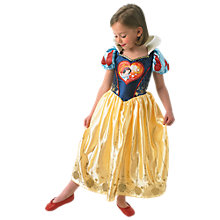BBC calls for costume law change may be premature

Watchdog this evening will launch a campaign to tighten up the laws relating to the sale of children’s costumes, following a catastrophic injury to Claudia Winkleman’s eight year old daughter who was burned whilst wearing a witches costume which brushed past a candle at a Halloween party last year.
Calls to change the law to ‘close a loophole’ may be premature.√جª¬ø
In this evenings episode of Watchdog, Ms Winkleman tells how her daughter caught fire whilst wearing an outfit that had been purchased for £5, but attempts to put the fire out by her and a neighbour only seemed to make things worse√جª¬ø.
The BBC is now spearheading a call for the regulations around flammability of childrens costumes to be tightened up. Jorge Leon-Vallapalos, who treated Matilda at London’s Chelsea and Westminster Hospital, said there was “a mini epidemic” of paediatric burn injuries “in certain periods of the year”.
It is claimed that Watchdog will highlight ‘legal loopholes’ which classes fancy dress costumes as toys rather than clothes and this means that they are subject to less rigorous safety tests than clothing.
Until the programme has been aired in full, it is not possible to understand the full extent of the claims, however, on an initial view, it would seem that the fundamental claims of the programme are unfounded.
It is quite clear that children’s costumes and play items have to be tested to long standing flammability regulations, currently governed by the Toy Safety Regulations and ISO 8124-2:2007 which covers toy disguise costumes and toys intended to be worn by a child in play.
There are also clothing regulations that are specifically directed towards childrens nightware – The Nightwear (Safety) Regulations 1985 (SI 1985 No. 2043), which are aimed at polyester clothing that tends to burn and shrink rather than flame. Conversley, there are no specific guidelines for adult clothing, other than the overarching General Product Safety Regulations 2005 that ensure that all products that are put on the market are safe.
Whilst it is accepted that research might assist to understand if there is a gap between the Toy Safety Regulations and the GPSR, in particular with respect to Childrens Clothing, the fundamental premise of the programme would seem to be misguided.
It is the view of the author that the reason for the lack of enforcement action is the chronic underfunding of the Trading Standards following the well documented cuts to public funding. A number of years ago, there were regular prosecutions of manufacturers of wigs, masks, Halloween robes and the like around the country – the majority of which resulted in successful defences as the companies established time after time that they were responsible and had taken all reasonable steps in due diligence to test their products.
It of course has to be pointed out that the cause of such accidents is the proximity of the item of clothing to a naked flame, yet there are no calls for the use of candles and other causes of such incidents to be regulated.
Most responsible manufacturers test their products on a voluntary basis, so calls to change the law without full empirical research would seem to be premature. Sadly, with the growth of shopping on the internet where it is easy to purchase counterfeit or substandard items, has made the regulation of this particular product difficult.
Of course, there can be nothing more distressing than seeing a young child injured in an accident such as this, with all the following medical treatment and ongoing trauma that will follow. However, knee jerk calls for a change in the law would seem to be an inappropriate response to such a distressing story.
Jeremy is a barrister who specialises in defending companies charged with Trading Standards offences. He has represented a number of manufacturers of toys, costumes and toys who faced allegations in respect of Star Wars outfits, Haloween Scary masks, robes and wigs. On every occasion the charges were dismissed, and in cases where product recalls or suspension notices were issued, they were later withdrawn with substantial damages being paid to the companies concerned. Jeremy often works with an Consultant on Toy Saftey, Mr Clive Shelton of Toysafe.


